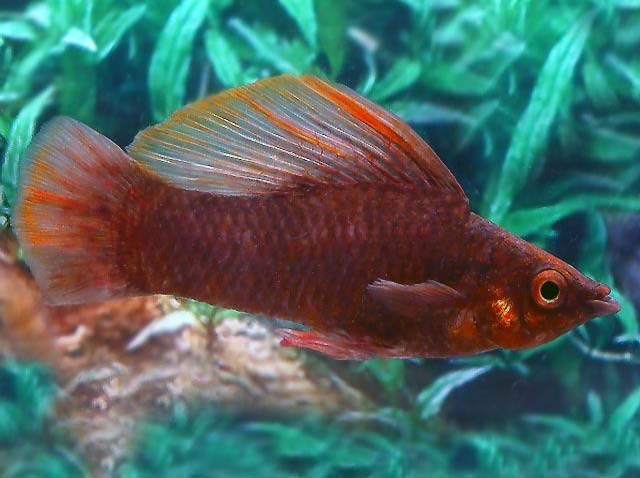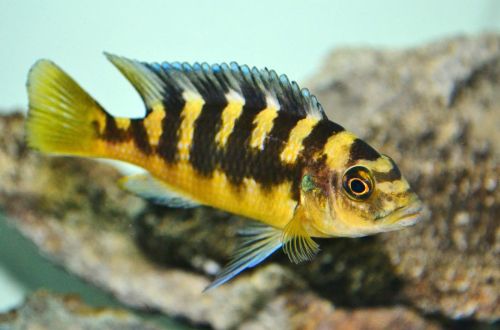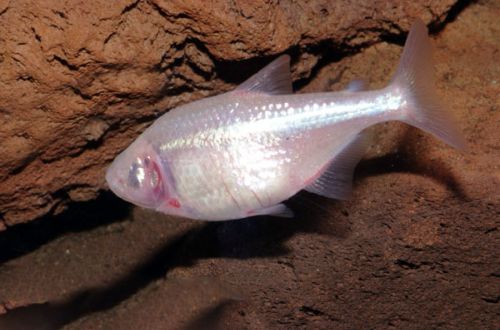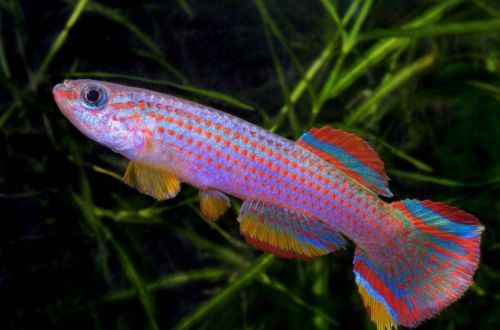
Chocolate mollies
Chocolate mollies, English trade name Chocolate Molly. It is one of the many color variations that are found among the breeding forms of Mollies. A characteristic feature is the brownish coloring of the body and fins. The color may be uneven, reminiscent of chocolate-colored specks merged with each other, or appear lighter or darker, and also contain pigments of other shades, such as red.

The exact origin of this variety, as well as how it was obtained, is unknown. “Chocolate colors” are the result of a mutation and are rarely passed on to the next generation in full.
Brief information:
- The volume of the aquarium is from 100–150 liters.
- Temperature – 21-26°C
- Value pH — 7.0–8.5
- Water hardness – medium to high hardness (15-35 GH)
- Substrate type – any
- Lighting – any
- Brackish water – acceptable in a concentration of 10-15 gr. salt per liter of water
- Water movement is weak
- The size of the fish is 12–18 cm.
- Nutrition – any feed with herbal supplements
- Temperament – peaceful
- Content alone, in pairs or in a group
Maintenance and progress, arrangement of the aquarium
Wild relatives of these fish live in shallow water in places with dense aquatic vegetation. In home aquaria, it is recommended to recreate similar conditions by placing patches of plants, while maintaining free swimming areas. Females, young males and fry will find shelter in them.

Large dominant (alpha) males sometimes pay excessive attention to females in order to procreate, so the latter need shelter. For the same purpose, in small reservoirs, it is desirable to maintain the size of the group according to the type of harem with a predominance of females.
Otherwise, the design of the aquarium is determined by the desire and capabilities of the aquarist.
The minimum dimensions of the aquarium are determined by the specific species. For 3-4 Chocolate Mollies of Sphenops, a volume of 100 liters is enough, but for Velifer Mollies, at least 150 liters will be required.
As with most species, the success of keeping is determined by several factors: clean water with suitable pH and GH values, a balanced diet, and the presence of peaceful neighbors.

Food. The basis of the daily diet can be dry food (flakes, granules) containing a large amount of plant components. The absence of the latter can lead to the fact that the fish will begin to damage the delicate parts of aquatic plants.
Compatibility. Other viviparous species, such as Guppies, Pecilia, Swordtails, as well as representatives of other groups of comparable size, will become good tankmates.





